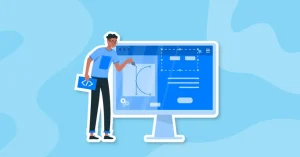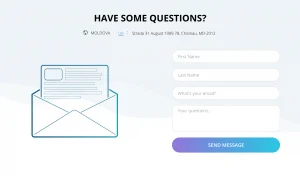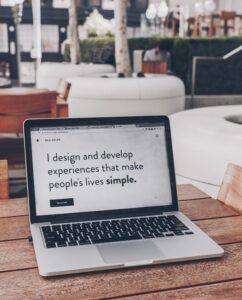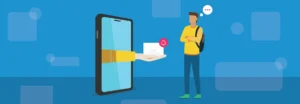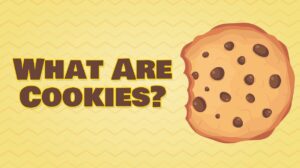Web design dictionary: What words do you need to know?

It is important to find the right agency for web design. They will be your pillar of support and will meet all your requirements. This agency is what you are looking for! Our website design service allows you to reach more people and can help you take your brand to new heights. First, you might feel the need for more information and a better understanding of the process involved in creating a website. This is why I created a brief dictionary of web design for you. After that, you will have all the information you need. Let’s begin!
Web design dictionary starting at A to C
Information architecture (AI). – This is the modeling of information about products and services in order to make it easier to find them on the site. It also helps to explain how to use the site. It should be easy to use so that users can find what they are looking for quickly and spend more time on your site. Let him know that you are the brand that will meet all of his needs.
Absolute Path (or Full Path) – This is the location of a folder or file on a computer or in a file system. It follows the path of a folder or file, starting with the root directory. For example: Users/designnameclient/photo/clients/project.jpg is the absolute path to this web page.
Apache is shorthand for Apache HTTP Server Project. It is open-source HTTP and the most popular web server on the Internet. It is compatible with Unix/Linux and Windows platforms.
ASCII, or American Standard Code for Information Interchange, is a character-encoding scheme that uses the English alphabet as its basis. ASCII codes represent text in computers, communication devices and other devices that use it.
Avatar is a picture or graphic that represents a user.
Banners – These are visuals that include advertising information about your products and services. These banners can be placed on different websites and are intended to highlight offers in an appealing way. Your potential customers will find your banners attractive and relevant.
Database – refers to the organization of information stored on a website. To make it easier to process the data, they are organized on lines and columns. You can manage, modify, reorganize, and update a database.
![]()
Bug (programming error), a term that refers to an error which can be found on a website and can sometimes go unnoticed. Such an error could lead to strange website behavior. These errors can be fixed by a programmer. They may appear as a simple error in the mathematical relationships.
Breadcrumbs are a way for websites to organize their link structure in a hierarchical manner. The site’s information will appear as a series of links starting at the homepage. Example: Home > Services > Dental appliances.
Chatbot is a program that uses artificial intelligence to communicate with your customers. It can be embedded into your website. Chatbot allows you to communicate faster with potential customers. It is available 24 hours a day, 7 days a semaine. Chatbots can simulate a conversation and can be set up to answer many questions users may have. chatbot web design
Content is the method by which a message on a website is communicated using visual or graphic elements as well as text. These elements and texts should be relevant to the user, and help him navigate the site. It is essential that your content is search engine optimized in order to be effective.
Content Management System (CMS – This is an online platform that allows you to create and store your website information. The CMS is a software program that helps to manage website content.
Cookies are files that store information about visitors to your website. These files are saved on the device that the user uses to access the site. They are used to enhance their online experience. Cookies allow the site to identify the user and track his activities. They can then offer specific content from the stored information.
CSS is short for Cascading Stil Sheets. CSS is a style language for HTML elements. CSS allows you to change the background, colors, and position of elements on web pages.
Your website’s first impression is its colors. Your site’s colors will have an impact on how the user looks at it. They must be chosen carefully, so that they reflect the brand’s personality and are in line with the web design trends.
Web Design Dictionary, D to G
Dead Link – Links that don’t have a destination. They appear when the server goes down, or the page that should have redirected to you was moved or deleted.
Domains – Domains are a way to organize online resources. They have multiple hierarchical levels. Lower levels are websites that can be found at higher domains. Domains at the first level end with.com,.edu,.gov, or.org. Depending on the country, you can also divide by geographic areas. Domains are crucial for search engines and must be present on every site.
Search engines can penalize duplicate content – even though two pages may have a different design, if they contain the same content, including text, they could be penalized.
Dynamic Content is a way for a website to change its content automatically based on information from visitors. These sites can have a URL of.asp or.shtml. Even html pages can be made dynamic.
E-commerce is electronic commerce. It can include both products or services. It is a distant purchase-sale relationship via the Internet between a company, and a customer.
Firewall is a firewall that protects a device connected via the Internet. Firewall monitors the network and blocks any harmful external actions, such as viruses or hackers.
Fonts are character sets that include letters, numbers and symbols. These characters’ shape, size and style will be determined by the font.
FTP is shorthand for File Transfer Protocol. This is how images are uploaded to your website’s web pages.
GIF stands for Graphics Interchange Format. It’s a dynamic image that can be used as a video, but without sound.
Web Design Dictionary, H to W
The home page is the homepage of a website. It’s where all pages begin.
HTML is shorthand for Hyper Text Markup Language. It’s an editing language that displays the site’s information.
JavaScript is a programming language that is used to create websites as well as to add functionalities to web pages.

Layer – Each page on a website is made up of its own layer. These layers can be moved to any location on a page later. Layers can be added to other layers, and invisible layers can also be added. These layers can only be seen by clicking on the mouse. These layers are great for creating menus.
Layout – How to place elements like headers, footers, text boxes, and so on. on the page.
Multimedia is a collection of multiple types of content that includes audio or visual files, text, or other language formats.
A web page is an online resource with an internet address. HTML is the most popular format for a web page.
SEO stands for Search Engine Optimization. SEO is the process of optimizing your website pages for search engines. Your website will be able to reach the top of Google by simply searching the keywords. This will increase your brand’s visibility.
Speed is important. Your website should load quickly. Users will lose patience if your website loads slowly. A perfect loading speed is less than one second. Good speed is between 1 to 3 seconds and satisfactory speeds are over 7 seconds. Any speed above this speed requires urgent optimization.
Web design is the entire process of developing a website. It includes everything from designing a structure to loading media elements. It is the process of creating a website that is easy to use for both the administrator and the user.
Web developer – This is the job of a web designer. It involves the creation, structuring, and automation of a website.
These terms are all part of Web Design and once you are familiar with them, it will be easier to understand the underlying meaning of the field.
